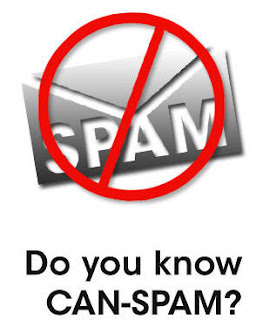College students used to complain about dining-hall mystery meat. Their new gripe? Puny e-mail inboxes.
Students have been howling that school e-mail accounts are too small to handle their daily deluge of mail and attachments. To address that problem, a growing number of colleges and universities are outsourcing their e-mail. The companies swooping in to manage student accounts for free? Google and Microsoft. Like search, software and operating systems, campuses are a burgeoning battleground for the tech titans. (
See pictures of the college dorm's evolution.)
Google now manages e-mail for more than 2,000 colleges and universities, enabling students to transform accounts capped at 100 mb into Google-managed inboxes that allow for 70 times as much mail. Microsoft also provides free Web-based mail for thousands of schools, including colleges in 86 countries. Once colleges switch systems, students keep their .edu e-mail address while upgrading from stodgy campus access pages to speedier, sleeker Google (or Microsoft) log-ins.
Kirk Gregersen, senior director for Microsoft's Live@Edu program, says many schools that already rely on Microsoft software and services are comfortable expanding the relationship by letting Microsoft manage Web-based student e-mail.
Early adopters of Google, such as Northwestern, are lately being joined by Cornell, Georgetown and Temple, to name a few. Google's Apps for Education program has gained significant momentum as student tech demands mount and budgetary pressures strain campus IT departments. Handing the e-mail keys over to Google helps schools avoid costly server upgrades while capitalizing on Web-based e-mail's popularity among students. Eric Weil, managing partner for Student Monitor, a national college-focused market research firm, says the average college student has two or three personal e-mail addresses, and Gmail's popularity among students has doubled over the past two years.
(Read "Google's Chrome: Taking Aim at Microsoft — and the iPhone.")
In the 2008 national Campus Computing Project (CCP) survey, 42% of schools reported that they had already migrated or were about to migrate to an outsourced student e-mail service. Another 28% said they were considering switching. CCP founding director Kenneth Green says many of today's first-year students like to use the Web-based e-mail they grew accustomed to in high school, just as many stick to an existing cell phone number rather than get a new dorm number.
Brown University is among the legion of schools now testing Google-managed messaging. Brown Junior Sarah Bolling says she hopes her school Googlifies permanently because she gets about 300 e-mails a week and misses important class messages when her tiny 250-mb school inbox overflows. She's not alone. More than 60% of Brown students have already been forwarding their messages to Gmail accounts, says Donald Tom, Brown's IT support director. He says the switch could help reduce a planned multimillion-dollar expenditure to upgrade Brown's tech infrastructure.
Of schools in the 2008 CCP survey that reported having outsourced e-mail already, 57% said they had opted for Google, while 38% had partnered with Microsoft. In addition to e-mail, Google's free Apps for Education offering includes voice- and video-chatting capabilities as well as collaborative word processing, spreadsheet, presentation and website-creation software. Google Apps shed its beta, or trial, label in July, reassuring decision makers. Microsoft, which is refining its own Web-based Office software, grants every student 25 gb of free online storage space.
When Notre Dame hired out their e-mail to Google last year, the school saved $1.5 million in storage and other tech costs, says Katie Rose, Notre Dame's program manager for enterprise initiatives. Student e-mail satisfaction ratings rose 36% after the switch. Arizona State estimated that its savings with Google were $400,000 per year. Washington State University, meanwhile, expects to save about $100,000 by working with Microsoft.
(See the top 10 Microsoft moments.)
What's in it for Google and Microsoft? Not revenue. Neither company charges for outsourced e-mail. In its contracts with schools, Google forgoes the $50 annual fee per user that it charges companies and promises not to impose ads on students or faculty. Microsoft makes a similar pledge.
(Read "Can Microsoft's Bing Take a Bite out of Google?")
Even if it doesn't boost short-term profits, Google hopes serving schools for free will help broaden acceptance for Web-based e-mail and software services, says Jeff Keltner, who heads Google's Apps for Education team. Keltner says administrators appreciate not just cost savings but security benefits. "They walk away saying my data is probably safer in Google's data center than anywhere I would house it myself," he says. "And they appreciate the advantages to having data in the cloud, rather than residing on phones or laptops, which are devices that tend to get lost."
Timothy Chester, chief information officer for Pepperdine University, which recently partnered with Google, says his staff is 20% smaller than it was three years ago. Taking advantage of Google's economies of scale means that his smaller team can focus more on improving the way computers are used for learning on campus. "We want our staff working more with students and faculty and less on the nuts and bolts of delivering technology."
This article first appeared on www.time.com. Click here to view the original article.
































